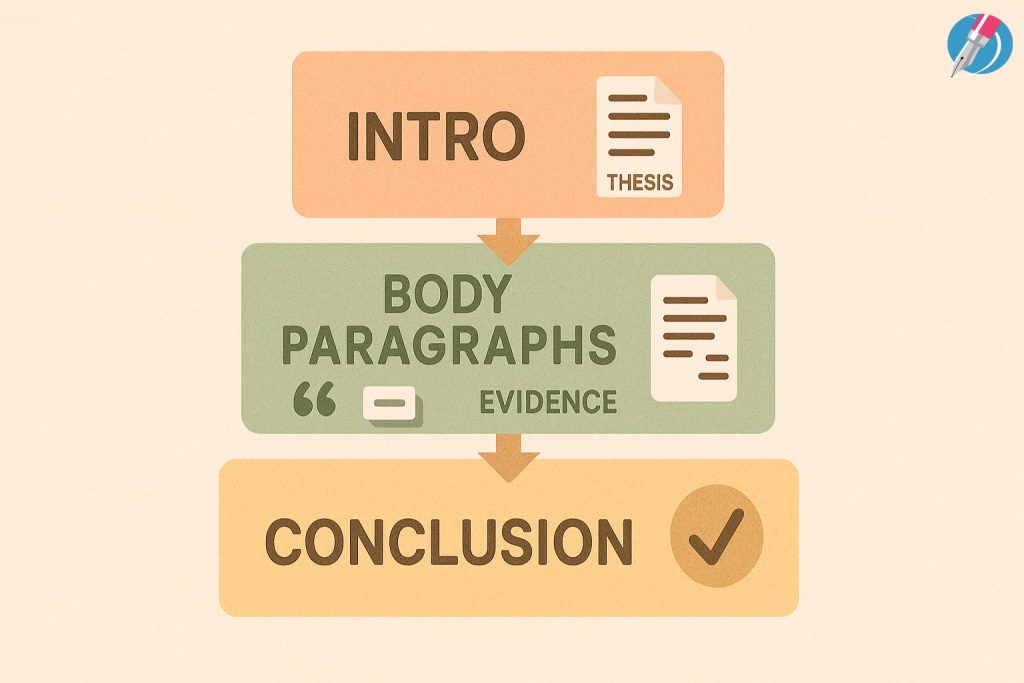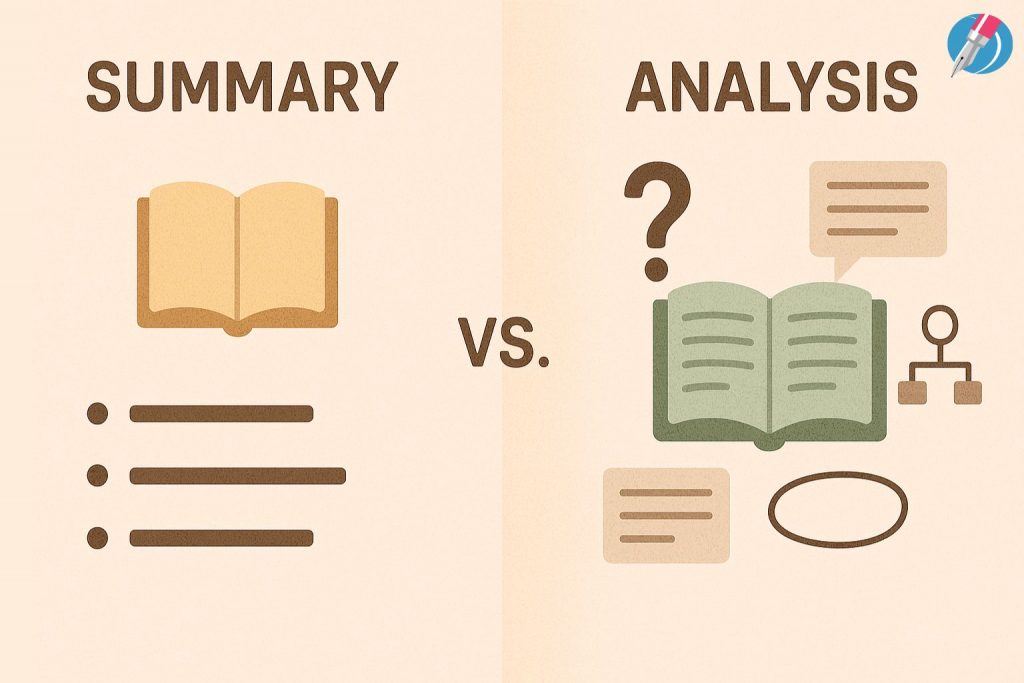How to Write a Critical Analysis? Step-by-Step Guide for Graduate Students
If you’re in graduate school, chances are you’ve come across the phrase “write a critical analysis” more times than you can count. Whether it’s for a class assignment, a seminar paper, or part of a thesis, critical analysis writing is one of those skills you can’t avoid. And honestly, it can be a bit overwhelming at first. The good news is that once you understand what it really means and how to approach it, it gets much easier. This guide is here to help you navigate the process step by step, using simple language and practical tips.

Many students confuse critical analysis with just summarising or critiquing something negatively, but it’s much more than that. It’s about applying critical thinking to academic texts, examining how arguments are built, and forming your own opinion based on thoughtful reflection. If you’re looking for reliable resources to help you with your writing, FineWriters is a great place to start. They specialise in content made for students, covering everything from essays to research skills.
Understanding the Purpose of a Critical Analysis

At its core, critical analysis is about understanding, interpreting, and evaluating a piece of work. It could be a research article, a novel, a theory, or even a case study. The goal is not just to explain what the author said, but to analyse how they said it, why they said it, and whether their argument holds up under scrutiny. This kind of analysis goes beyond surface-level observations and pushes you to explore deeper meanings and implications.
For graduate students, this process is essential. You’re no longer just absorbing information—you’re expected to engage with ideas on a much deeper level. That’s where analytical writing comes in. It helps you develop your own voice as a scholar by encouraging you to question assumptions, evaluate the strength of evidence, and consider alternative viewpoints. In a way, it’s your training ground for contributing to academic conversations and effectively evaluating research arguments across different fields. The more you practise critical thinking, the more capable you become of transforming complex readings into precise, well-organised text critique. Through repeated application, critical thinking becomes second nature and shapes your approach to complex problems across disciplines.
Step 1: Read and Understand the Source Material

Before you start writing anything, you need to read the material thoroughly. And not just a casual read—this is where critical thinking begins. As you go through the text, pay attention to the author’s main points, the evidence they use, the logic of their argument, and any underlying assumptions. It helps to highlight key passages and make notes in the margins or in a separate notebook. Ask yourself what the author is trying to prove, how they go about it, and whether their approach is convincing.
If you’re dealing with a complex article or a dense theoretical piece, try reading it more than once. The first time is for basic understanding, but the second and third readings help you pick up on the subtleties you might have missed. This process sets the stage for analysing academic texts effectively. With time, you’ll develop the skills needed for extracting relevant information and using it to form your own opinions—a key part of developing critical insights. It also trains your eye for detail, essential in both text critique and critical assessment tasks assigned throughout your degree. Strong critical thinking during this step ensures that you interpret the material with a questioning mindset.
Step 2: Develop a Thesis Statement

Once you’ve got a good grip on the text, the next step is to come up with a thesis statement. This is the main point of your critical analysis essay—your argument about the work you’re analysing. A strong thesis isn’t just a statement of fact; it’s a clear, concise opinion that you will back up with evidence throughout your essay.
For example, let’s say you’re analysing a journal article on climate policy. Instead of just stating that the article discusses environmental issues, your thesis might argue that while the author provides a strong analysis of policy challenges, their limited geographical scope undermines the article’s global relevance. This kind of statement shows that you’re engaging critically and are ready to build a thoughtful, evidence-based analysis that leads to genuine insights. In your analytical writing, this evidence strengthens your logic and proves that your interpretation is valid and scholarly.
This process is also the starting point for constructing analytical arguments that are clear and convincing. When your thesis is strong, it becomes much easier to develop your body paragraphs around logical points that support it. In addition, it’s where your analytical writing begins to truly take shape, bridging the gap between comprehension and critical assessment.
Step 3: Structure Your Critical Analysis

Now that you’ve got a thesis, it’s time to organise your thoughts into a clear structure. Every critical analysis essay needs a beginning, middle, and end, just like any good piece of writing. Your introduction should briefly describe the text and then present your thesis. This helps the reader understand what you’re analysing and what your position is.
The body of your essay is where the real work happens. Each paragraph should focus on one aspect of the text, whether it’s the use of evidence, the author’s tone, or the logic of their argument. Start each paragraph by clearly stating the point you’ll discuss and then explain how the author handles that aspect. Use examples or quotes from the text to support your ideas and always link it back to your thesis. This step is essential for constructing analytical arguments that are both structured and persuasive.
In the conclusion, tie everything together by summarising your main points and restating your thesis in a new light. You don’t want to introduce new information here; instead, reflect on what your analysis has shown and why it matters in the larger context of the field. Well-crafted analytical writing here leaves a lasting impression, reinforcing your ability in critical assessment and refining your approach to text critique.
Step 4: Analyse, Don’t Summarise

One of the most common mistakes students make is summarising the text instead of analysing it. A summary tells your reader what the author said, but a critical analysis explains why it matters, how effective it is, and what could be improved. You need to break down the author’s argument and evaluate it piece by piece.
Ask yourself whether the author’s points are supported by credible sources. Are there any logical fallacies or contradictions? Does the tone match the message? Are alternative viewpoints considered, or does the author ignore them? These questions will help you go deeper and make your analysis more meaningful. This kind of in-depth approach is what makes your critical analysis essay stand out in postgraduate work.
By constantly engaging with ideas and pushing your understanding, you’ll be better at analysing academic texts and ultimately more confident in writing critical review assignments that go beyond surface-level interpretations. Strong analytical writing during this phase improves both your text critique skills and your overall scholarly engagement.
Step 5: Support Your Argument with Evidence

To make your critical assessment convincing, you need to support your points with solid evidence. This includes direct quotes, paraphrased ideas, and references to other works if needed. But remember, don’t overload your writing with long quotes. Instead, use them to back up your argument and explain why they matter. Make sure every piece of evidence you use is clearly linked to the point you’re making in that paragraph.
Citing your sources properly is also crucial. Depending on your programme, you might be asked to use APA, MLA, or another citation style. Whatever it is, be consistent. Proper citation not only shows that you’ve done your research but also strengthens your credibility as a writer. When used well, evidence-based analysis reinforces your claims, and demonstrates your commitment to rigour. Applying evidence-based analysis repeatedly helps your argument gain academic authority, particularly when evaluating research arguments in a professional or scholarly setting.
Step 6: Revise and Refine Your Work
No first draft is perfect. Once you’ve written your analysis, take a break and come back to it with fresh eyes. Read it out loud to catch awkward phrasing or repetition. Ask yourself if your argument flows logically from one paragraph to the next. Are there any weak spots where you need more evidence or clearer explanations?
Editing is just as important as writing. It helps you catch not only grammar and punctuation mistakes but also issues with structure and clarity. You might even find that your original thesis needs tweaking after writing the body of your essay. That’s totally normal. Writing is a process, and part of that process is being open to change.
If you’re unsure whether your work is on the right track, ask a classmate or tutor to review it. Sometimes another person’s perspective can reveal things you missed. You can also compare your writing against examples or guides from trusted sources like FineWriters, or check out their Essay Writing service for personalised help with your coursework.
When you revise with intention, you sharpen your argument, clean up your expression, and reinforce your ability in developing critical insights—something that will benefit you across every area of your academic journey.
Conclusion and Final Tips
Writing a critical analysis essay doesn’t have to be a nightmare. Once you understand the steps—reading carefully, forming a thesis, building structured arguments, and using evidence effectively—it becomes a manageable, even rewarding task. For graduate students, mastering this skill is essential not just for coursework, but for thesis writing, journal submissions, and presentations.
The more you practise writing critical review assignments, the better you’ll get at expressing your ideas clearly and confidently. It’s not just about critiquing others—it’s about learning to think in a structured, reflective way that helps you grow as a scholar. Over time, you’ll find yourself applying these same skills in discussions, research, and even job applications.
So, the next time you’re assigned a critical analysis essay, don’t panic. Think of it as an opportunity to sharpen your mind, develop your academic voice, and contribute to meaningful conversations in your field. And whenever you need help, you know where to look—FineWriters is always just a click away.
